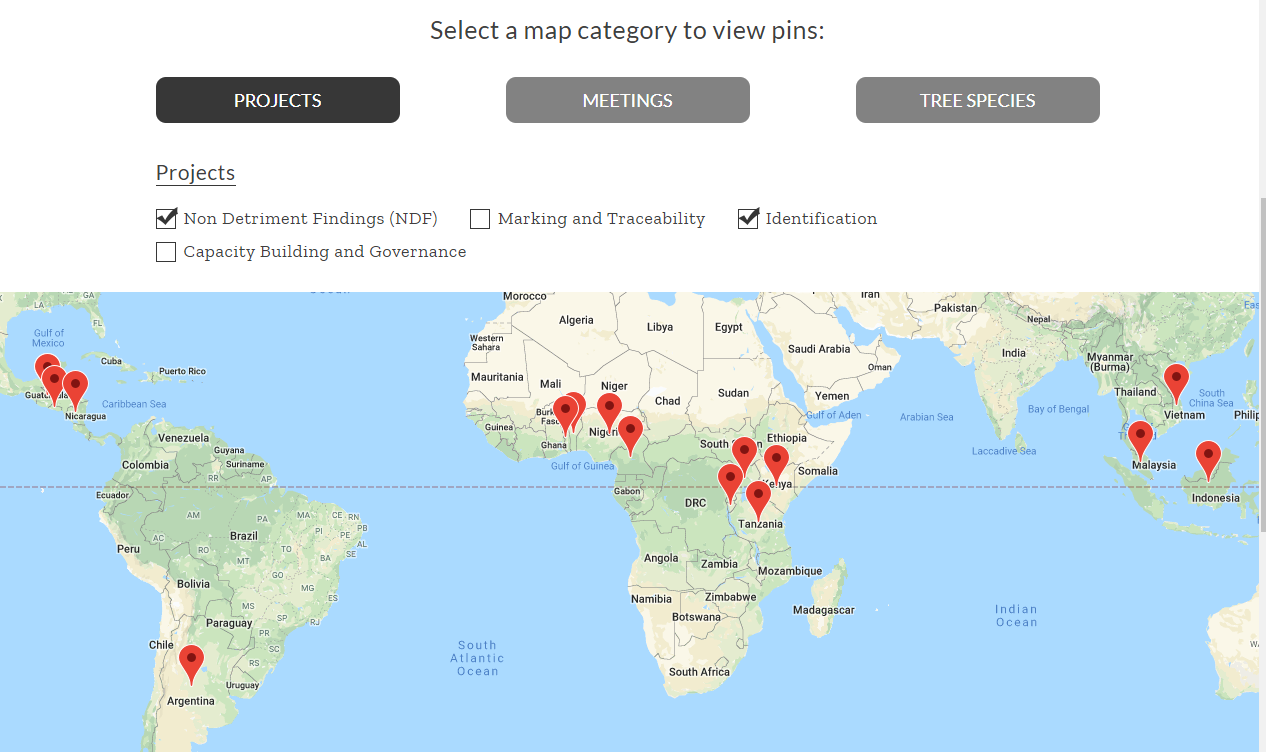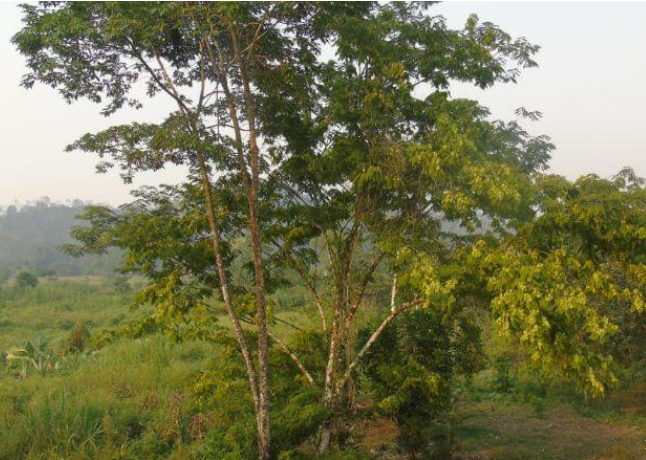
Geneva, February 20, 2020 – The CITES Secretariat has launched a dedicated website for the European Union-funded CITES Tree Species Programme (CTSP), in all three working languages of the Convention: English, French and Spanish.
The website is available at www.cites-tsp.org, and comprehensively introduces the CITES Tree Species Programme. The various sections present the programme background, structure and contact information, as well as news and events.
The website will be updated routinely with information about the programme and the activities it supports with Parties in Central and South America and the Caribbean, Africa and Asia. A ‘Resources’ section contains manuals and documents relating to CITES and tree species. The sections are illustrated with images of field and project work.
Finally, a ‘Programme map’ contains categories and filters to find information on a project, a tree species, or a meeting.
This website creates an interactive and user-friendly browsing experience for everyone interested in the work of the CTSP and in the efforts of Parties working towards strengthening their capacities to implement the Convention for listed-tree species.
The CTSP team will regularly update the information on progress made and the results of the various activities the programme supports. The new website is to bolster the visibility of the programme and serve as a centralized information tool for all stakeholders involved.

 |
Delegates at the 5th Advisory Committee meeting of the CTSP.
10 December 2019, Lomé, Togo |
|
Timber with names of 7 CITES Appendix II species.
Photo by Myrna Herrera. |
Dalbergia cubilquitzensis
Photo by Nature for Life Foundation |
About the CITES tree species programme:
On 14 July 2017, the CITES Secretariat and the European Commission announced their collaboration in a project for the sustainable management of CITES-listed tree species, and the conservation of the African elephants. This involved a significant financial contribution of 8 million Euro from the European Union (EU), of which 7 million Euro were earmarked to support the project component relating to CITES-listed tree species.
The CITES Tree Species Programme selected and provided financial support to 17 projects that work towards the conservation and management of 8 CITES-listed tree species and two genera including rosewood species from Central and South America and the Caribbean.
By working to strengthen their capacity in key areas of implementation, such as the formulation of non-detriment findings, enforcement, marking and traceability, and the identification of tree products, the Programme aims to ensure these States can keep their trade in timber, bark, extracts and other related products legal, sustainable, and traceable.
Figures on wildlife crime, such as those of the 2016 UN World Wildlife Crime Report by the United Nations Office on Drugs and Crime (UNODC), have shown that timber, and most notably rosewood products, are some of the species that are most frequently targeted by illegal trade flows.
In line with UN Sustainable Development Goal number 15 on conserving life on land - including forests, the ecosystems they provide, and the trees that form them -, the CTSP is set up to improve and strengthen forest governance in a way that allows Parties to benefit from long-term species conservation, hence halting biodiversity loss, while also supporting the livelihoods of communities that rely on forests and trade in forest products.
Currently, there are over 900 species of commercially valuable trees listed in the CITES Appendices. Their inclusion reflects the Conference of the Parties’ concerns for the long-term survival of these species, and their will to conserve them and avoid overexploitation.
Speaking about the EU-funded project during the 2019 CITES Conference of the Parties, the Head of the European Union delegation Mr. Jorge Rodriguez-Romero said: "We are very much encouraged by the significant efforts made by a large number of Parties to implement tree species listings over the last years. Beyond decisions at international meetings, we are particularly keen to make sure that work can take place on the ground, at the level of national authorities, local agencies and stakeholders involved in the management of these tree species."
For CITES Secretary General Ivonne Higuero, "the CITES Tree Species Programme is setting an interesting example on how to strengthen Parties’ implementation of and commitment to the Convention when dealing with species that are often targeted by illegal traders. We are grateful to the European Union for providing resources to the Secretariat to assist CITES Parties in reversing CITES-listed tree species negative trends. Providing such an initiative with its own dedicated platform will help spread its work and contribute to reinforce the visibility of collaborative efforts to conserve wildlife and ensure legal and traceable trade flows of wildlife in general."


